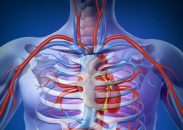A study compared pooled data of claudication and critical ischemia patients treated with stenting vs. by-pass surgery in femoropopliteal disease. The main objective of revascularization in femoropopliteal disease is to improve the quality of life and functional capacity of claudication patients who did not respond to medical treatment, and to save the affected limb in…
TCT 2022 | BYPASS CTCA
Studies have shown that the use of computed tomography cardiac angiography (CTCA) prior invasive coronary angiography (ICA) in patients with prior cardiac artery bypass graft (CABG) might reduce procedural time and post procedure kidney injury. 1 out of 5 patients with ischemic cardiomyopathy and prior CABG need to be assessed with ICA within 3 years…
Bypass Grafting and Native Coronary Artery Disease Activity
Positron emission tomography (PET) with F sodium fluoride (F-NaF) allows for the assessment of microcalcification activity (MA) in a wide variety of cardiovascular conditions, including atherosclerosis. In coronary artery disease, this tracer correlates with progressive disease and allows for the prediction of atherosclerosis progression. Unlike PETs, computed tomography (CT) allows for the evaluation of an…
Infrainguinal Bypass Following Failed Endovascular Intervention Has a Different Outcome
We often inform our patients we should first approach the superficial femoral with an endovascular intervention, and that should it fail or develop restenosis, we could always resort to a bypass. We were not lying when we’d assume a bypass following endovascular intervention would have the same outcome as a primary bypass. Simply put, no…
Introducing the number one enemy of PCI: diabetes
About 25% of patients with multivessel disease undergoing myocardial revascularization surgery or PCI have diabetes. In this subgroup, the benefit of surgery in terms of mortality has long been shown: in the BARI study (Bypass Angioplasty Revascularization Investigation) patients undergoing PCI had close to double the mortality rate at 5 years compared to those…
VELETI II: PCI to Intermediate coronary SVG lesions with DES
Original Title: Sealing intermediate non-obstructive coronary SVG lesions with DES as a new approach to maintaining vein graft patency and reducing cardiac events: the VELETI II randomized clinical trial. Presenter: J. Rodes Cabal. Non-obstructive SVG lesions affect mid-term prognosis negatively. There is little evidence on the safety and efficacy of non-obstructive intermediate SVG lesions…
Predictors of Internal Mammary Artery Graft Failure
The Internal Mammary Artery (IMA) is the preferred conduit for bypassing the left anterior descending artery (LAD) in patients undergoing coronary artery bypass grafting. There is no systematic evaluation of the frequency and predictors of IMA failure or long-term outcomes. The PREVENT IV included 1539 patients receiving IMA-LAD revascularization with 12 and 18 month…






